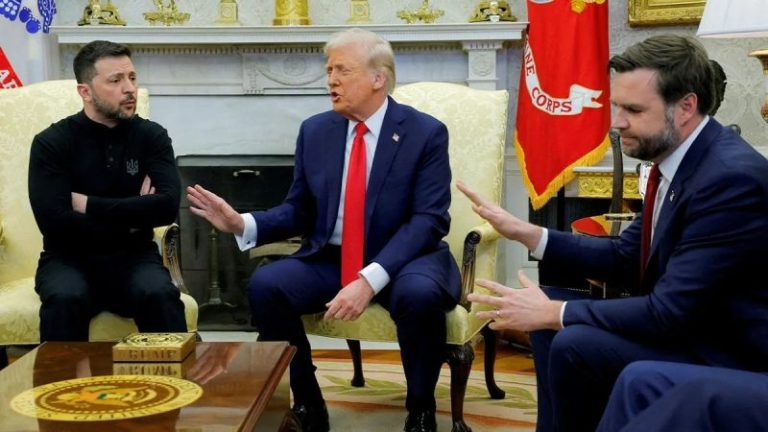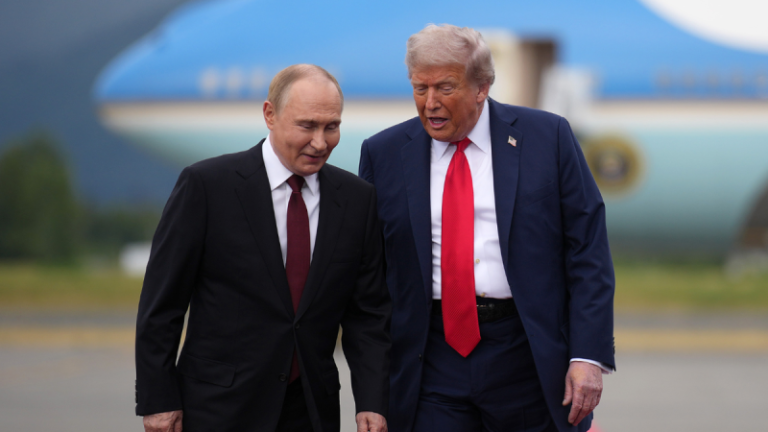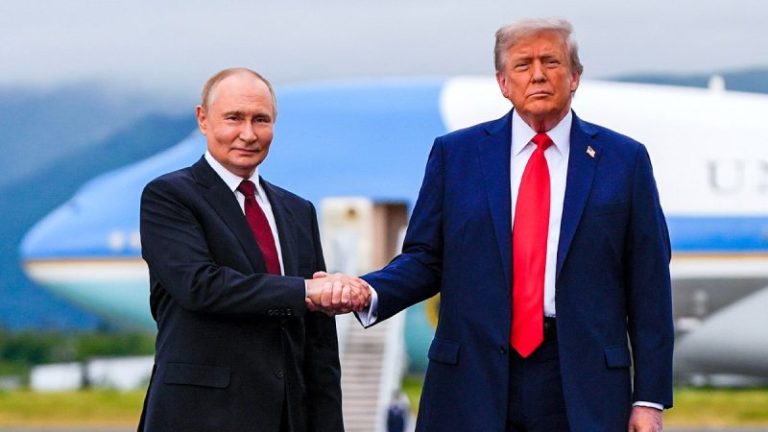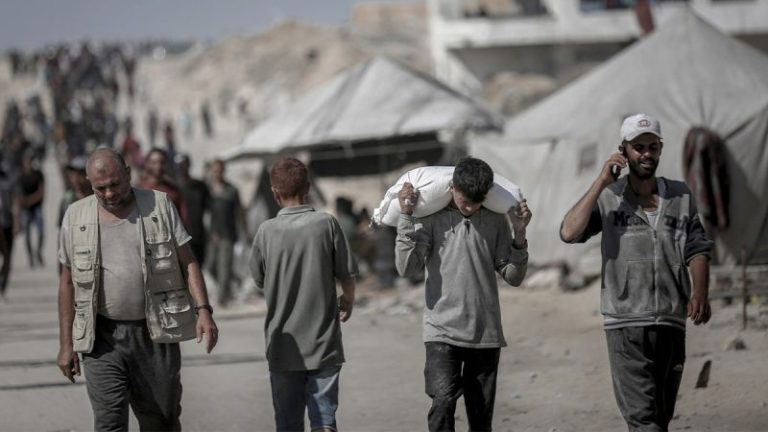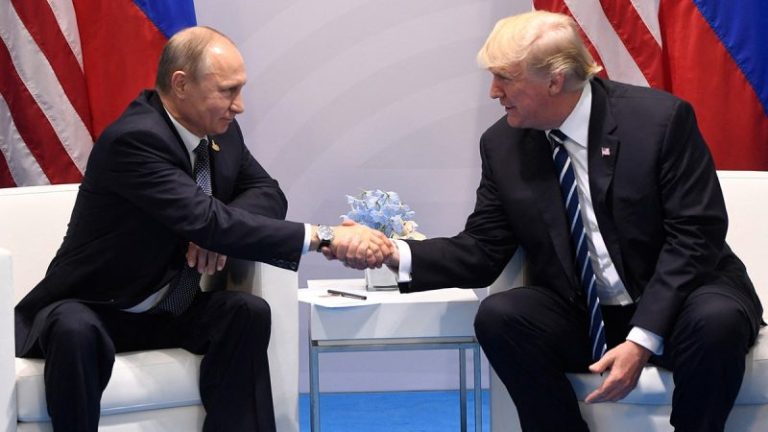Ukrainian President Volodymyr Zelenskyy heads into a high-stakes White House meeting with President Donald Trump on Monday, as Washington considers security guarantees for Kyiv and debate intensifies over whether land concessions to Russia could end the war.
Zelenskyy will be flanked by key European allies at the White House, a diplomatic overture that signals Europe’s determination to rally behind Ukraine.
Over the weekend, the Ukrainian leader acknowledged his last White House visit – cut short by a shouting match between Trump and Vice President JD Vance – and told reporters in Brussels he hopes Monday’s meeting ‘will be productive’ rather than a repeat of February’s encounter.
The upcoming meeting comes on the heels of Trump’s summit with Russian leader Vladimir Putin in Anchorage on Friday, where the U.S. leader shifted from demanding a ceasefire to calling for a final peace deal.
Trump’s special envoy Steve Witkoff told CNN that Putin agreed to allow the U.S. to provide Ukraine ‘robust security guarantees.’
‘We got to an agreement that the United States and other European nations could effectively offer Article 5-like language to cover a security guarantee,’ in reference to the critical NATO provision,’ Witkoff said, referencing the military alliance’s mutual defense clause, known as Article 5.
NATO’s Article 5 – the cornerstone of the alliance – stipulates that an attack on one member is an assault on all, obligating allies to come to each other’s defense. The proposed security guarantees for Ukraine would not come through NATO, but rather from select European allies in the event of a Russia-Ukraine peace deal.
Zelenskyy welcomed the revelation during a Sunday press conference alongside European Commission President Ursula von der Leyen.
‘It’s important that America agrees to work with Europe to provide security guarantees for Ukraine, and we are very thankful to the United States under the president for such a signal,’ Zelenskyy said.
‘This is a significant change, but there are no details about how it will work and what America’s role will be, what Europe’s role will be and what the EU can do,’ he added.
‘Impossible to give up territory or trade land’
Over the weekend, Zelenskyy reiterated that his war-weary nation will not surrender any territory to Russia as the Kremlin’s three-and-a-half-year conflict grinds on.
‘The constitution of Ukraine makes it impossible to give up territory or trade land,’ Zelenskyy said during a press conference at the EU Commission on Sunday.
He added that Russia has repeatedly tried and failed to seize the entirety of the Donbas region in eastern Ukraine for a period of 12 years.
The area, which includes Donetsk and Luhansk oblasts, is an industrial hub where coal mining and steel production remain central to Ukraine’s economy. In short, control of Donbas’s mines and factories would hand Moscow powerful leverage over Kyiv’s financial survival.
‘Since the territorial issue is so important, it should be discussed only by the leaders of Ukraine and Russia at the trilateral Ukraine, United States, Russia,’ Zelenskyy said.
The Ukrainian leader, who spoke alongside von der Leyen, said that so far the Kremlin has ‘given no sign that the trilateral will happen.’
‘With regards to any territorial questions in Ukraine, our position is clear: international borders cannot be changed by force. These are decisions to be made by Ukraine and Ukraine alone, and these decisions cannot be taken without Ukraine at the table,’ von der Leyen said.
Following the meeting with the Russian leader, Trump signaled that Zelenskyy should take Putin’s deal to end the war because ‘Russia is a very big power’ and Ukraine is not. Still, Secretary of State Marco Rubio sought to play down speculation that Trump could push Zelenskyy to give up Ukrainian land to Russia as part of a deal to end the war.
‘The president has said that in terms of territories, these are things that Zelenskyy is going to have to decide on,’ Rubio told Maria Bartiromo on Fox News’ ‘Sunday Morning Futures.’
‘All the president is trying to do here is narrow down the open issues,’ Rubio said, adding that Trump is focused on ending the Kremlin’s full-throttle assault on Ukraine.

